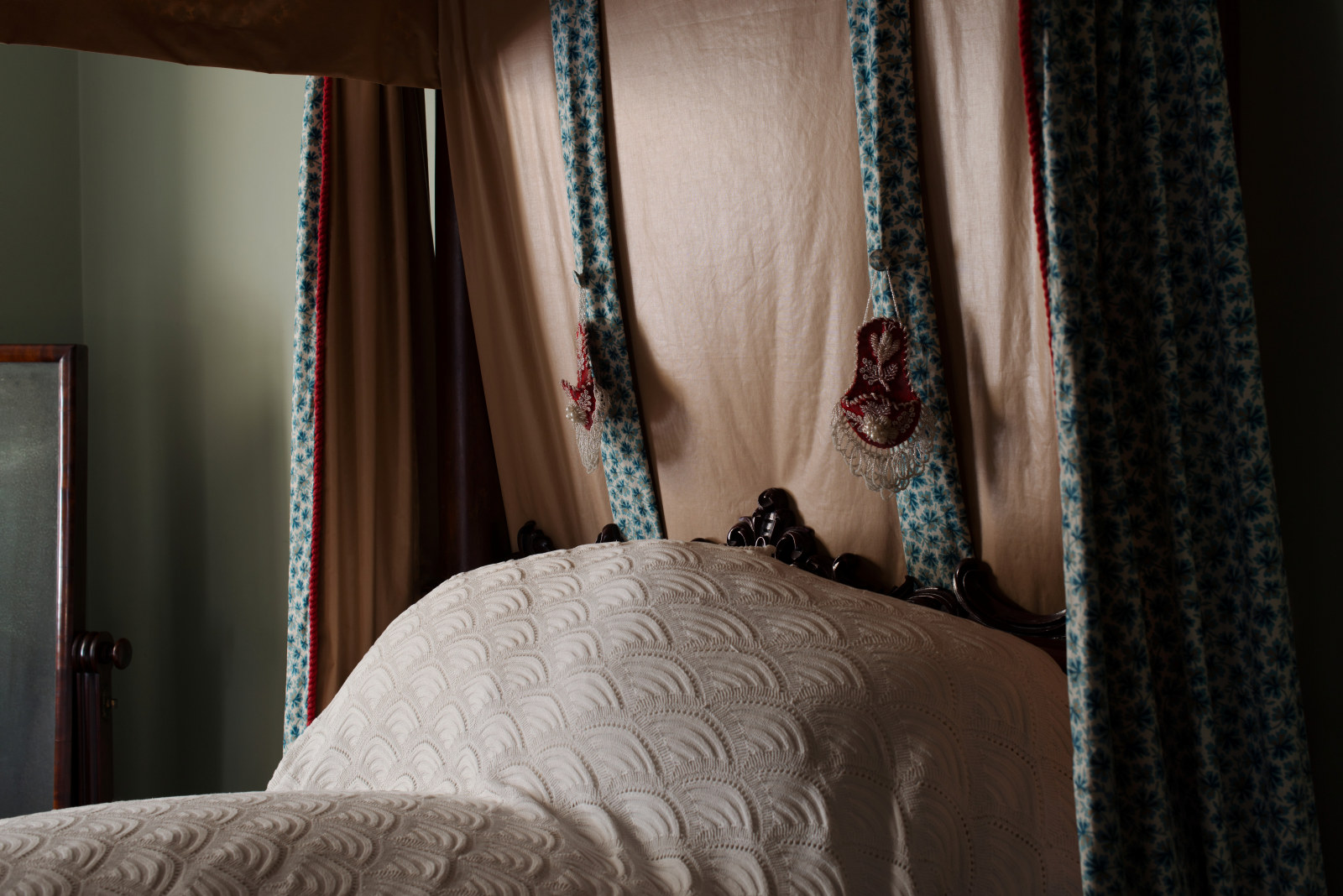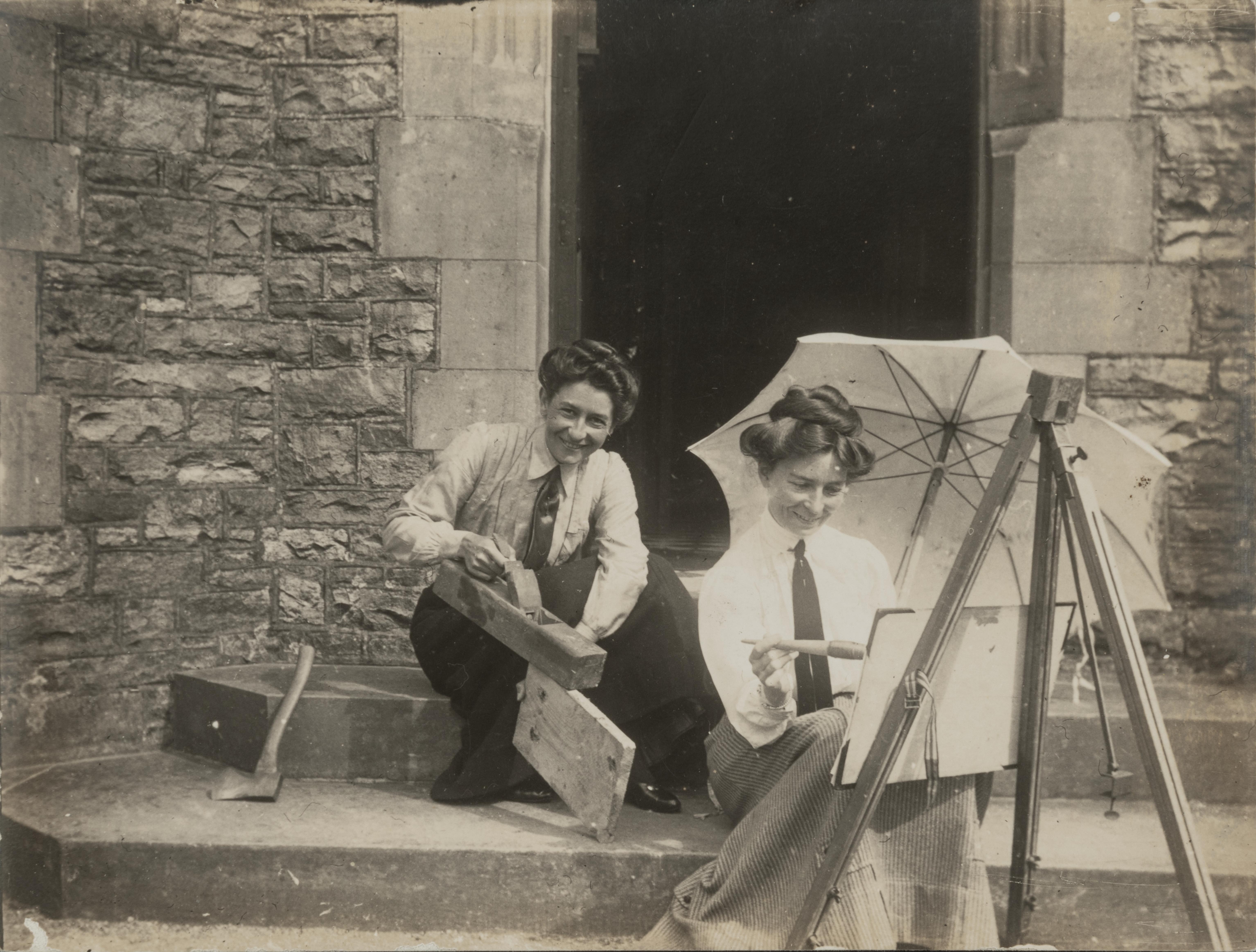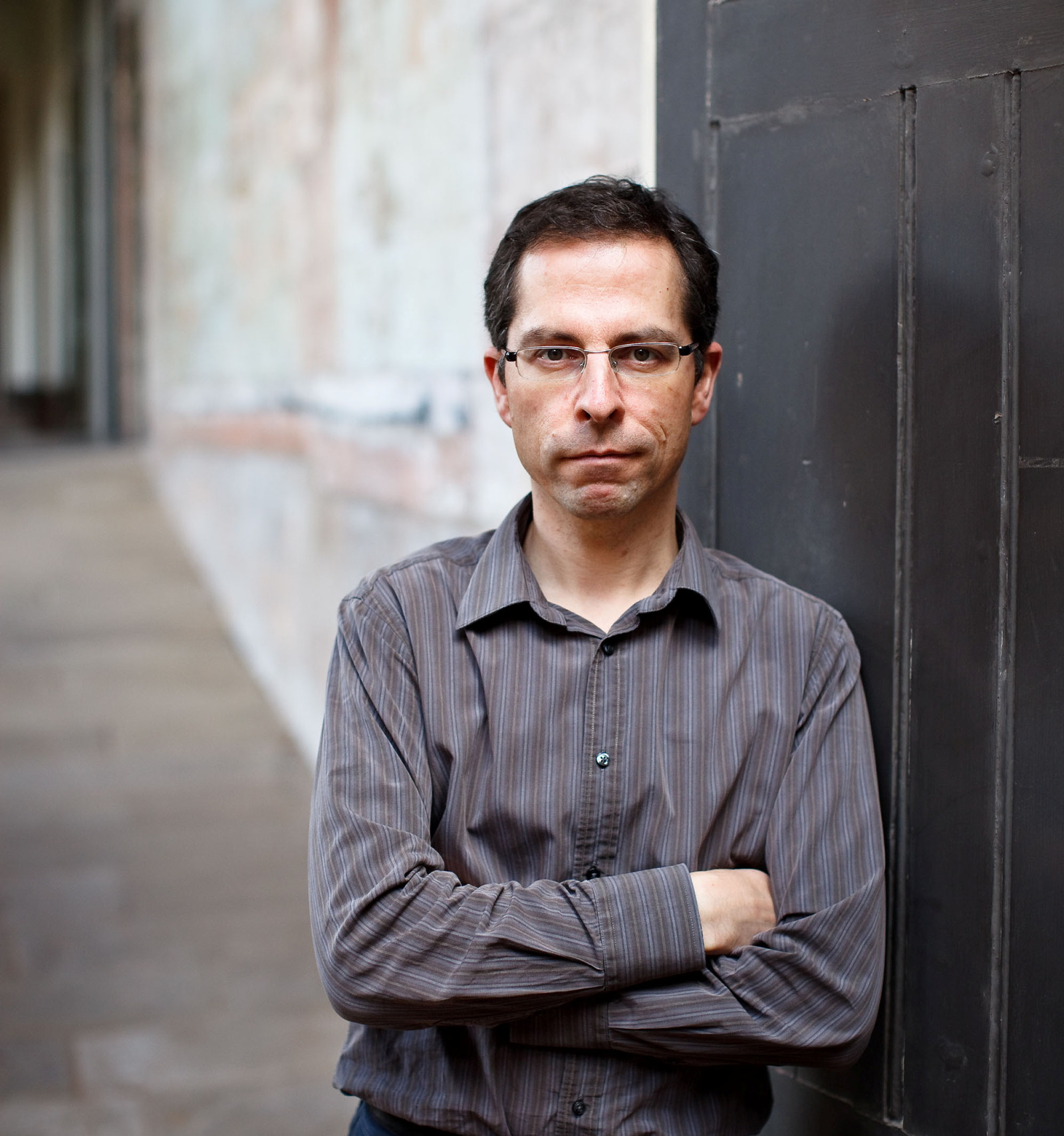New textiles for a Modernage
Considered a commercial failure when it was released in the 1940s, the Modernage range of textiles is now seen as a high point in the design history of Australia.
The Caroline Simpson Library & Research Collection recently acquired two pairs of artist-designed curtains from arguably the most celebrated collection of Australian-made textiles, the Modernage Fabrics range, made by Sydney-based company Silk & Textile Printers (STP) in 1947. One pair of curtains features the ‘Stone and wood’ design by Russell Drysdale, and the other, ‘Pearl divers’ by Donald Friend.
Artistry for the everyday
Drysdale and Friend were among a group of 33 artists and designers who produced 46 designs for the Modernage Fabrics range. Other artists included Douglas Annand, Jean Bellette, William Dobell, James Gleeson, Justin O’Brien and Margaret Preston. This was the largest number of Australian artists ever associated with a local textile project. It was also one of the boldest attempts from a technical point of view at textile production in Australia, as many of the designs were silk-screen printed in an unusually large number of colours – ‘Stone and wood’ used ten colours. Drysdale’s designs were printed as furnishing fabrics, but other artists’ designs were created on lighter-weight fabrics for clothing.
Textile companies in Europe and North America had been commissioning artists to design textiles since the early 20th century, but in Australia it was still rare. In the foreword to A new approach to textile designing, a contemporary publication promoting the Modernage range, STP Chairman Claudio Alcorso states that ‘the designs reproduced … are an expression of a desire to introduce creative thought and beauty into the everyday things of life’.1 This sentiment was expressed by many industrial designers in Australia and overseas at the time, who claimed that artists had the aesthetic training to improve the quality of design of everyday items, including textiles.
Local themes
Drysdale supplied two designs for the Modernage Fabrics range, ‘Tree forms’ and ‘Stone and wood’. Both depicted parched Australian landscapes, a theme Drysdale was exploring in his paintings following a trip through drought-stricken western NSW. The finished designs were highly unusual subject matter for textiles available in Australia in the 1940s; however, the Australian Women’s Weekly reported that despite the ‘seemingly unpromising subjects’, ‘Stone and wood’ was ‘one of the most outstanding’ designs in the range.2
In March 1947, Drysdale wrote to Friend about possibly designing textiles for STP. Drysdale reported that his own designs had already gone into production: ‘They have sold 400 yards of my stuff here – I get a royalty of 2 [shillings] a yard which means about £50 so far. They tell me they expect to sell some thousands of yards in America. Seems pretty good. I only hope you can get some done’.3
Poor sales
The range garnered considerable publicity when first released and was championed by retailers such as David Jones, who dedicated 14 windows in its three Sydney stores to the launch of Modernage Fabrics in 1947. Yet Alcorso considered the range a commercial failure. He had expected the bright colours and bold designs to appeal to a generation looking towards a new postwar world, and also sought to take advantage of shortages in imported textiles immediately after World War II. Alcorso attributed the poor sales to the public’s preference for conventional designs and to the range’s limited use in largescale projects such as new government offices and architect-designed modernist builds. The media exposure and retail connections earned by the range were clearly invaluable, however, and helped STP to achieve considerable success with other ranges over the next decades.
Notes
In light of Donald Friend’s self-acknowledged paedophilia, considerable debate has ensued across many Australian museums and galleries about whether it’s appropriate to collect and display his works. Museums of History NSW has collected Friend-designed curtains as they are part of arguably the most significant range of Australian-made textiles. Further, the production of these textiles – creating the pattern repeat, conversion from artwork to silk-screen print, choice of colour and texture – was the work of many creative technicians employed at STP of Sydney.
- Claudio Alcorso, foreword, A new approach to textile designing: by a group of Australian artists, Ure Smith, Sydney, 1947, p3.
- ‘Well-known artists style fabrics’, Australian Women’s Weekly, 30 August 1947, p44.
- Anne Gray (ed), The diaries of Donald Friend vol 2: 1944 – 23 March 1949, National Library of Australia, Canberra, 2002, p505.
Published on
Related

The Astor, 1923–2023
Upon completion in 1923, The Astor in Sydney's Macquarie Stree twas the largest reinforced concrete building in Australia, the tallest residential block, and this country’s first company title residences

Watch pockets
Watch pockets hung on the head cloth of a four-post bedstead and originally served in place of bedside tables, which were uncommon in the 19th century

Wall to wall: a marvellous wallpaper collection
A remarkable donation of over 3000 wallpaper samples by John and Phyllis Murphy adds to our existing collection to form Australia’s largest repository of historic wallpapers

Queering the Interior: London, New York, Sydney, 1882–1929
Design practices of five figures from queer history: Irish playwright and poet Oscar Wilde, American actress and interior designer Elsie de Wolfe, and Australian artists Eirene Mort, Roy de Maistre and Adrian Feint (1894–1971)
